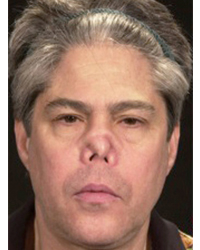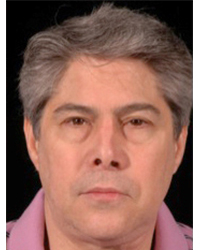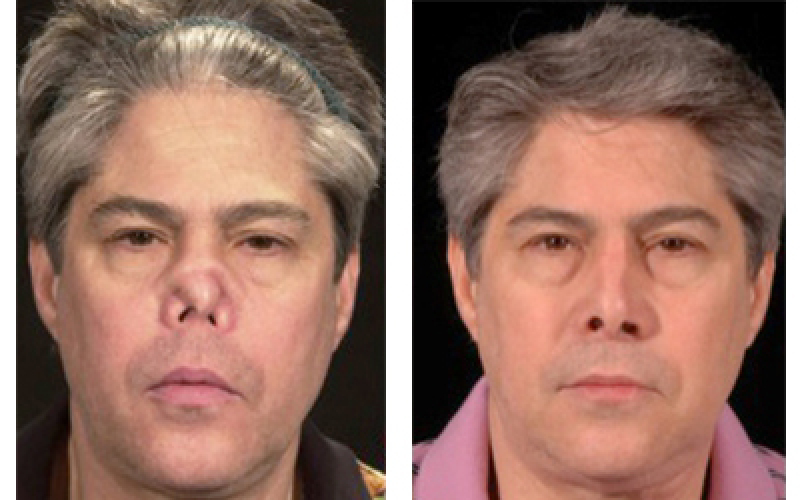Nasal Deformity in Dallas, TX
Patients can count on the International Craniofacial Institute in Dallas, Texas for state-of-the-art treatment of nasal deformities, including congenital issues and those caused by trauma.
The nose plays an important role in human health and appearance. It is critical for proper air flow and sense of smell and is an important part of the immune system. Nose anomalies can present a number of issues involving both form and function. Fortunately, reconstructive/modification surgical techniques are available to correct problems and to present an attractive appearance.
What Is Nasal Deformity?
A nasal deformity occurs when any of the structures in and around the nose is atypical. This can include very common conditions such as a deviated septum or cleft lip or more unusual conditions such as those caused by genetic disease, such as Treacher-Collins syndrome.
What Is Nasal Aplasia?
Nasal aplasia occurs when the structure of the nose fails to develop correctly in the embryo. The result is an absence of one side of the nose (heminasal aplasia) or the entire nose. With the absence of the external structures of the nasal region of the face, the internal air passages are often missing as well. Although isolated cases exist, this condition often occurs in association with other facial anomalies.
Causes of Nasal Deformity
Deformities of the nose can be caused by a wide range of factors. Genetic diseases can cause malformations of the face, including the nose. Any type of mass that grows in or around the nose can also cause deformity. It’s also possible for trauma, such as from being punched or being involved in a car accident, to heal incorrectly and leave the nose deformed or misshapen. Age can cause the nasal structures to weaken and collapse. Even infections, such as certain fungal strains, can cause deformity in severe cases.
What Is Nasal Obstruction?
Nasal obstruction is sometimes present at birth and also occurs due to trauma. Anatomical abnormalities of the nose may hinder or prevent air flow. By surgically removing or modifying the blockage structure, the problem may be corrected.
How Is Nasal Deformity Treated?
Treatment options will vary depending on the cause and type of the deformity. For those with fungal infections, antifungals could very well reduce the nose back to its original size and shape. Most other causes, however, need to be treated via surgical intervention. Rhinoplasties, septoplasties, and other related procedures can improve breathing through the nose, as well as aesthetics. Depending on the patient’s individual case, a skilled surgeon may use any number of techniques to achieve the desired results.
Why Choose International Craniofacial Institute?
Since its founding by Dr. Kenneth Salyer in 1971, the International Craniofacial Institute has gained worldwide recognition as being one of the most advanced facilities in the treatment of craniofacial disorders. The complexity of the field means we understand our patients have an array of dental, medical, psychosocial, and surgical needs. To address these issues, our team consists of many dedicated professionals who represent more than 15 disciplines of specialty. Our physicians have successfully treated more than 17,000 patients from more than 30 different countries. We additionally train surgeons from many world locations in the advanced techniques required for craniofacial diagnosis, surgical correction, and repair.
If you have a child or another family member who is suffering from a genetic syndrome or has a cleft lip, cleft palate, or craniofacial complication, the staff at the International Craniofacial Institute can help. Contact us today to talk with the doctors and staff about your options and how we can help.


